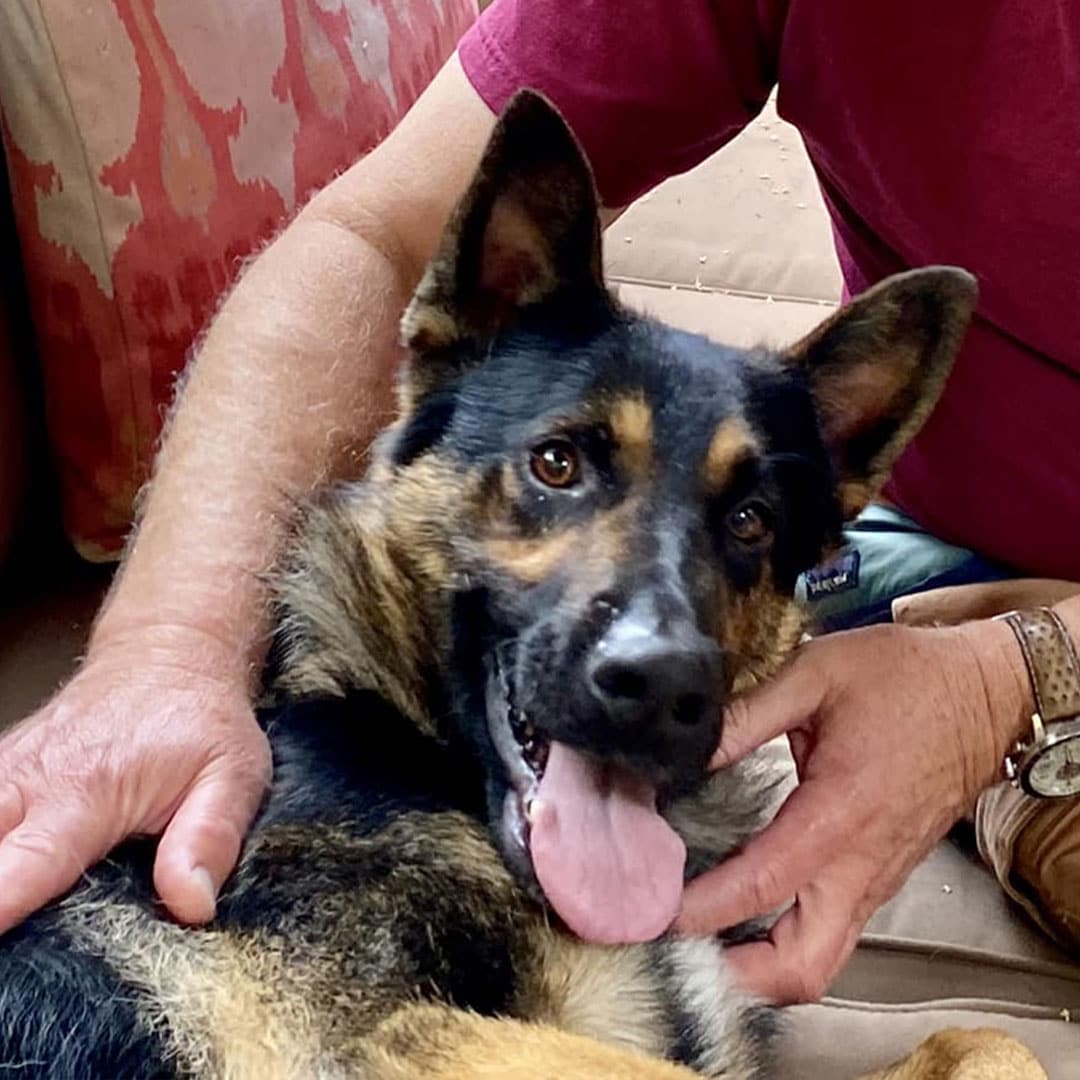Facility animals are cats and specially trained dogs who work alongside a facilitator in a healthcare or educational setting.
Shelter to Service facility animals are personally selected and matched with facility staff members to meet the needs of their specific role, which may enhance therapies by reducing anxiety, encouraging participation, and providing comfort to the clients or co-workers in professional environments. Though not considered service dogs, facility dogs receive the same in-depth training as our psychiatric service dogs.
“Our dog knows when to come over to me and say, ‘Hey. It’s okay. I’m here.’”
– Monica, Shelter to Service Graduate

Is a Facility Animal Right for You?
Like all specially trained animals, facility dogs are taught to perform specific tasks that support individuals in therapeutic, medical, or educational environments. These highly trained dogs work alongside professionals to provide comfort, encouragement, and practical assistance.
The presence of a facility dog can help with the following:
- Reducing stress and anxiety in high-pressure environments, such as hospitals, schools, and rehabilitation centers.
- Providing emotional support and motivation during therapy or recovery sessions.
- Encouraging social interaction and communication among individuals who may struggle with engagement.
- Helping to regulate emotions by offering soothing companionship and a calming presence.
- Assisting with task-oriented interventions, such as modeling behaviors or reinforcing positive routines.
- Enhancing overall wellbeing by fostering a sense of connection, safety, and emotional resilience.
Facility Animal Applicant Requirements
Applicants must submit a letter of approval from a facility supervisor. This letter must include:
- The date the letter was written.
- Facility letterhead/logo (if applicable).
- Applicant’s name and title/position.
- How long applicant has been employed at the facility .
- Expressed permission to regularly bring a facility animal to work.
- A brief description of the intended purpose of the facility animal.
- Applicant’s facility name and physical address.
Applicants must be willing and able to travel to our Walnut Creek campus to attend the following:
- Three-day orientation (one hour per day for three consecutive days).
- Hand-off training classes (two-hour training classes, five days per week, for two weeks).
- Facility task training classes (one-hour training classes, twice per week, for a minimum of two and a half months).
Applicants are responsible for training and handling their dog in adherence to our guided program in order to meet the expectations required for graduation.
General Program Eligibility Requirements
Each different type of Shelter to Service service has individual eligibility requirements for applicants. More information is available on their specific program pages. But all applicants must have the following qualifications.
- Applicants must live in a stable, personal residence.
- Applicants must demonstrate willingness and ability to provide proper care and a safe home environment for a dog for their lifespan.
- Applicants must be at least 16 years or older.
- Applicants must submit a copy of their photo ID.
- Applicants must be willing and able to travel by car to our Walnut Creek campus.
The Path Towards Becoming a Facility Dog
How does a shelter dog become a facility dog? While both facility dog and cat candidates are assessed for their temperament and human affiliation, canine candidates are also assessed for the capacity to learn tasks that are performed in a facility setting.

Step 1 – Admissions (Intake)
Joybound visits partner shelters to identify animals with the greatest potential to become candidates for facility work.

Step 2 – Assessment
Our team conducts extensive assessments to determine whether a dog is a suitable candidate for the Shelter to Service program.

Step 3 – Volunteer Foster Training
Dogs that display both motivation and aptitude for the program spend 15 weeks with volunteer foster trainers, honing skills that will eventually serve their future adopters.

Step 4 – Matching
Upon completing training, the candidate is matched with a facility staff member for the support of their respective facility.

Step 5 – Participant Training
Program participants and their matched candidates build specific skills for at least 12 weeks in order to best support the individual participant or facility.

Step 6 – Graduation & Adoption
Once the team has completed the training curriculum and passed the program assessment, the participant officially adopts the candidate and the team graduates from the program, earning their facility dog certification.

Step 7 – Recertification
All graduated teams participate in an annual recertification to ensure standards are being met for continued status recognition through the Shelter to Service program.
Get Involved with Shelter to Service

Become a Volunteer Foster Trainer
Volunteer foster trainers make our mission possible.

Make a Gift to Shelter to Service
Your support changes the lives of people and pets alike.

Apply for a Shelter to Service Animal
Start your assistance or support animal journey.
